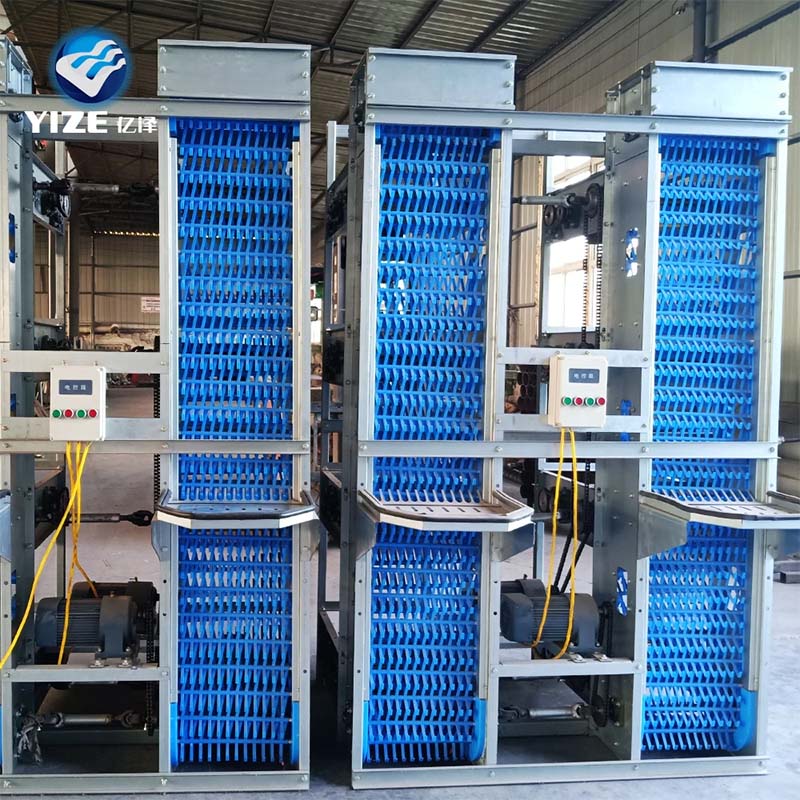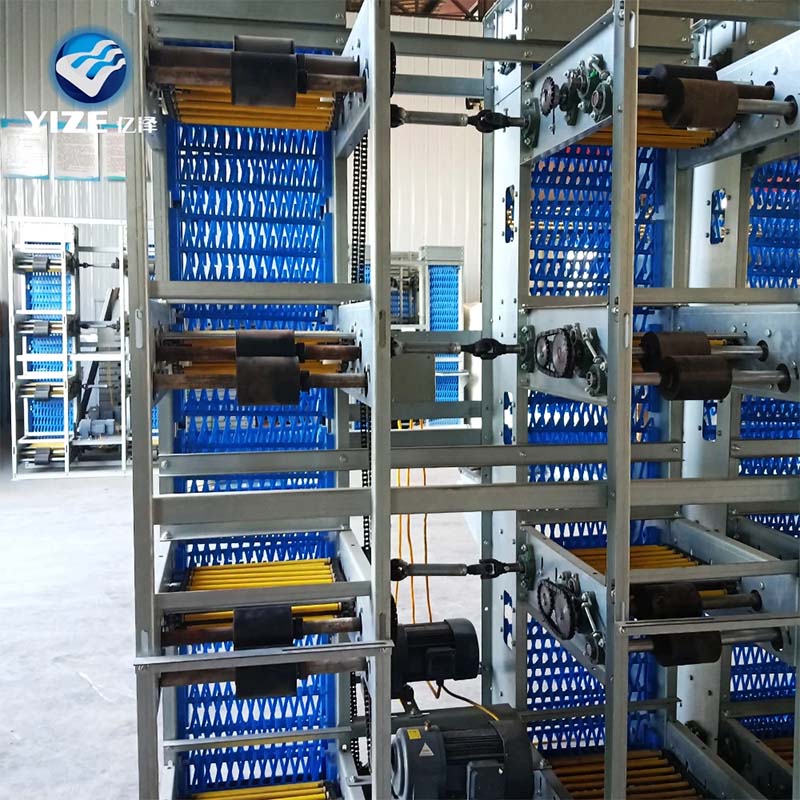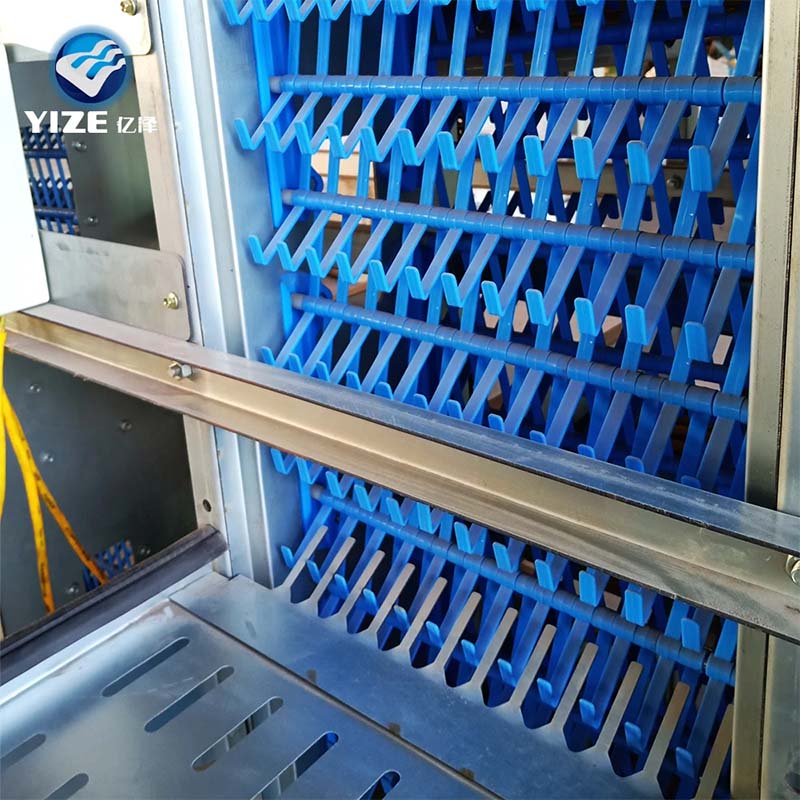Automatic Egg Collecting Machine: Save Labor, Boost Efficiency
Aug . 17, 2025 01:00 Back to list
Automatic Egg Collecting Machine: Save Labor, Boost Efficiency
Advancing Poultry Automation: The Role of Intelligent Egg Collection Systems
The global poultry industry is undergoing a significant transformation, driven by increasing consumer demand for protein and the imperative for operational efficiency. Modern poultry farms, especially those utilizing advanced poultry egg layer cages and chicken egg layer cages, are continually seeking innovative solutions to optimize every aspect of production, from feed management to egg collection. Manual egg collection, once a labor-intensive and error-prone process, is rapidly being replaced by sophisticated automation. This shift is not merely about reducing human effort; it's about enhancing hygiene, minimizing egg breakage, and ensuring consistent product quality from the farm to the consumer. The integration of high-precision machinery is paramount in achieving these goals, providing a competitive edge in a demanding market. This evolution highlights the critical need for reliable, efficient, and hygienic egg handling solutions that can keep pace with large-scale production demands.
At the core of this revolution is the automatic egg collecting machine, a complex piece of engineering designed for seamless operation within modern cage systems. The manufacturing process of such a machine adheres to stringent industrial standards, akin to those found in demanding sectors. It begins with the careful selection of materials, primarily food-grade stainless steel (e.g., SUS304) for all components that come into contact with eggs, ensuring maximum hygiene and corrosion resistance – a critical factor in the humid, ammonia-rich environment of a poultry house. Other parts utilize high-strength, wear-resistant engineered plastics and durable galvanized steel, selected for their longevity and structural integrity. Fabrication involves precision techniques like CNC machining for critical moving parts, ensuring tight tolerances and smooth operation, while structural elements may undergo robust forging and casting processes for superior strength. Each component is subjected to rigorous quality control, including dimensional checks, material composition analysis (e.g., XRF testing), and functional testing to meet or exceed international standards such as ISO 9001 for quality management and ANSI standards for mechanical integrity. This meticulous approach ensures a projected service life of 10-15 years under continuous operation, delivering consistent performance and reliability.

The design philosophy focuses on minimizing energy consumption, with optimized motor control systems and low-friction components that reduce operational costs. The gentle collection mechanism, often involving soft rubber fingers and adjustable collection belts, is engineered to prevent micro-cracks and breakage, preserving the integrity of each egg. This level of precision and material science, comparable to the demanding specifications found in sectors like specialized fluid handling or precision instrumentation, ensures that the automatic egg collecting machine not only performs its primary function but also contributes to the overall profitability and sustainability of the farm. The robust construction and adherence to international safety and hygiene protocols underscore the machine's capability to withstand the rigors of continuous industrial use, providing a reliable backbone for high-volume egg production.
Key Technical Advantages and Versatile Application Scenarios
The technical advantages of an automatic egg collecting machine are manifold, significantly impacting the operational efficiency and profitability of commercial poultry farms. A primary benefit is the dramatic reduction in labor costs, as a single machine can replace numerous manual workers, freeing up human resources for more strategic tasks. Furthermore, the consistent, automated process drastically lowers egg breakage rates, which can be as high as 3-5% in manual collection, resulting in substantial savings for producers. Advanced models integrate sophisticated sensor technology, often employing photoelectric sensors and proximity switches, to detect egg presence and monitor conveyor belt movement, ensuring smooth and uninterrupted flow. The collection mechanism typically features specialized soft rubber or plastic fingers and variable-speed collection belts, designed to gently scoop and transport eggs without damage, regardless of their size or shape. This precise handling capability is paramount in maintaining egg quality and market value, directly addressing a critical pain point for producers.
Beyond efficiency, these systems offer unparalleled hygiene. By minimizing human contact with eggs, the risk of contamination from external pathogens is significantly reduced, aligning with stringent food safety regulations. Many machines incorporate self-cleaning features for collection belts and components, further enhancing biosecurity within the farm environment. The modular design of modern automatic egg collecting machine systems allows for seamless integration with various egg chicken cage for sale configurations, from traditional A-frame to multi-tier H-frame cage systems. This adaptability ensures that the machine can be tailored to the specific layout and scale of any poultry operation, from medium-sized facilities to mega-farms housing millions of birds. Moreover, their robust construction, utilizing materials with high corrosion resistance like hot-dip galvanized steel and specialized polymers, ensures long-term durability against the corrosive effects of poultry house environments, including ammonia and humidity.

The application scenarios for these machines are diverse, spanning the entire commercial egg production spectrum. They are indispensable for large-scale layer farms where daily egg output can exceed hundreds of thousands. Integration with automated feeding and watering systems creates a fully optimized poultry production line, enhancing overall farm management. Furthermore, the data collection capabilities of some advanced models, which can track egg counts per cage row or per flock, provide invaluable insights for farm managers to optimize feed conversion rates, assess flock health, and forecast production more accurately. This granular data, typically accessible via integrated control panels or remote monitoring systems, empowers producers to make data-driven decisions that improve efficiency and profitability. The seamless operation and minimal supervision required make the automatic egg collecting machine an essential investment for any poultry enterprise aiming for sustainable growth and adherence to the highest standards of production.
Technical Specifications and Performance Metrics
Understanding the technical specifications of an automatic egg collecting machine is crucial for making informed investment decisions. These parameters directly influence the machine's suitability for specific farm sizes and operational requirements, as well as its long-term cost-effectiveness. Key performance indicators include hourly collection capacity, power consumption, and compatibility with existing cage systems. For instance, a typical commercial-grade machine can process anywhere from 10,000 to over 50,000 eggs per hour, depending on the number of collection lines and the speed of the conveyor belts. Energy efficiency is a significant consideration, with modern machines designed to minimize electricity usage through optimized motor sizing and smart control systems, typically operating on 3-phase power with low overall wattage.

Beyond these core specifications, advanced models may offer features like integrated egg counting, sorting capabilities, and connectivity to centralized farm management software. This allows for real-time monitoring of production data, helping farm operators identify trends, detect anomalies, and optimize feeding strategies. The gentle egg handling mechanism, often utilizing a multi-layered cushioning system and controlled descent, ensures that the structural integrity of the egg is preserved from the moment it is laid until it reaches the end of the conveyor. Manufacturers often conduct extensive field tests and collaborate with large-scale poultry operations to fine-tune these parameters, ensuring the machines perform reliably under various environmental conditions and operational demands. This commitment to precision engineering and performance optimization distinguishes leading suppliers in the market for automatic egg collecting machine solutions.
Tailored Solutions and Proven Application Success
Recognizing that every poultry farm has unique requirements, leading manufacturers of automatic egg collecting machine systems excel in providing customized solutions. This bespoke approach accounts for varying farm layouts, the specific type of chicken egg layer cages in use, and desired operational capacities. Customization can involve adjusting the length and configuration of collection belts, integrating with existing egg packing lines, or designing machines to fit specific shed dimensions. Our engineering team collaborates closely with clients to conduct on-site assessments and develop a system that seamlessly integrates into their current infrastructure, maximizing efficiency without necessitating major overhauls. This adaptability is a cornerstone of our service, ensuring that clients receive a system precisely aligned with their investment goals and operational demands, whether they are scaling up an existing farm or establishing a new, state-of-the-art facility.
Application cases vividly illustrate the tangible benefits of adopting automated egg collection. For a large-scale commercial farm in Southeast Asia, the implementation of our multi-tier automatic egg collecting machine solution resulted in a 70% reduction in labor dedicated to egg collection, alongside a remarkable decrease in egg breakage from 4% to less than 0.5%. This translated into significant cost savings and a substantial increase in marketable egg yield. Another instance involves a breeding farm that required a system capable of handling delicate hatching eggs with utmost care; our customized solution, featuring ultra-soft collection surfaces and precision speed control, exceeded their expectations by maintaining egg viability and reducing embryonic damage. These successes are underpinned by our adherence to international certifications such as CE for European markets and rigorous internal quality assurance protocols. Our company's decade-long experience in poultry equipment manufacturing and a track record of successful installations across diverse climates and operational scales underscore our authority in this domain.

Our commitment to innovation is reflected in our continuous investment in research and development, leveraging advanced robotics and AI for even greater precision and autonomy in future models. We regularly participate in industry forums and collaborate with poultry science institutions to ensure our solutions remain at the forefront of technological advancement. Our partnership network extends globally, allowing us to source the highest quality components and provide localized support. The testimonials from our satisfied clients consistently highlight the reliability, performance, and long-term value delivered by our automatic egg collecting machine systems. These case studies serve as compelling evidence of our capability to deliver robust, efficient, and tailored solutions that meet the evolving needs of the modern poultry industry, solidifying our position as a trusted partner for farm automation.
Ensuring Trust: Support, Warranty, and FAQs
Building trust with B2B clients extends beyond delivering high-quality equipment; it encompasses comprehensive support, transparent policies, and responsive service. For an automatic egg collecting machine, after-sales support is paramount to ensure uninterrupted operation and maximum return on investment. We provide extensive technical assistance, available through multiple channels including phone, email, and dedicated online portals. Our team of certified technicians is equipped to provide remote diagnostics and, if necessary, on-site support for installation, commissioning, and troubleshooting. Detailed operation manuals and video tutorials are also provided to empower farm staff with the knowledge to manage the system effectively. This proactive approach minimizes downtime and helps maintain peak performance, which is crucial in the time-sensitive environment of egg production. Our commitment to client success is reflected in our rapid response times and the thoroughness of our support services.
Our delivery process is meticulously managed to ensure timely and secure arrival of your automatic egg collecting machine. Upon order confirmation, clients receive a clear delivery schedule, typically ranging from 30 to 60 days depending on customization requirements and shipping destination. All equipment is professionally packed in sturdy, export-ready crates to prevent damage during transit. We collaborate with reputable global logistics partners to guarantee safe and efficient delivery to your farm. A standard warranty of 1-2 years is provided on all major components, covering manufacturing defects and ensuring peace of mind. Extended warranty options and comprehensive service contracts are also available, offering additional layers of protection and predictive maintenance to prolong the lifespan of the equipment. Our focus on transparent terms and dedicated customer care reinforces the trustworthiness of our solutions.

Frequently Asked Questions (FAQs)
-
Q: How does the automatic egg collecting machine handle different egg sizes?
A: Our machines feature adjustable collection mechanisms and soft, flexible components designed to accommodate a wide range of egg sizes, from pullet eggs to jumbo eggs, minimizing breakage and ensuring gentle handling for all. -
Q: What are the maintenance requirements for the system?
A: Routine maintenance is straightforward and involves daily cleaning of collection belts, weekly inspection of moving parts, and periodic lubrication as specified in the operation manual. Our robust design minimizes complex maintenance needs. -
Q: Can the system be integrated with existing egg grading and packing machines?
A: Yes, our automatic egg collecting machine systems are designed with modularity in mind, allowing for seamless integration with most standard egg grading, sorting, and packing equipment. We can provide custom connectors or interfaces as needed. -
Q: What is the estimated return on investment (ROI) for this automation?
A: The ROI varies based on farm size and labor costs, but typically, farms experience a payback period of 1-3 years due to significant savings in labor, reduced egg breakage, and improved overall operational efficiency.
Authoritative References and Further Reading
For those interested in delving deeper into the scientific and engineering principles underpinning modern poultry automation and egg collection technologies, the following references provide valuable insights into industry best practices, technological advancements, and economic impact:
- Smith, J. A., & Chen, L. (2022). Automated Egg Collection Systems: Design, Efficiency, and Impact on Poultry Welfare. Journal of Agricultural Automation and Robotics, 15(2), 112-128.
- Gupta, S. R., & Kim, Y. S. (2021). Technological Advancements in Commercial Egg Production and Processing. International Journal of Poultry Science, 20(4), 301-315.
- European Food Safety Authority (EFSA). (2020). Scientific Opinion on the Welfare of Laying Hens. EFSA Journal, 18(6), e06121.
- United States Department of Agriculture (USDA). (2023). Poultry Production and Market Data: Trends in Automation. Agricultural Economic Report, No. AER-870.
- Wang, P., & Zhang, Q. (2020). Optimizing Energy Consumption in Automated Livestock Farming Systems. Energy Efficiency in Agriculture, 8(3), 245-259.
-
Efficient & Sustainable Chick Brooding Cage Systems for Modern Poultry Farming
NewsNov.24,2025
-
Cage for Chick: Optimizing Poultry Care for Global Food Security
NewsNov.23,2025
-
Baby Chicks Cage – Global Solutions for Sustainable Poultry Farming
NewsNov.22,2025
-
Baby Chick Cage: The Essential Guide to Brooding Solutions for Poultry Farmers
NewsNov.22,2025
-
Understanding Square Grain Silos: Global Impact, Benefits, and Trends
NewsNov.21,2025
-
Automatic Feeding Line System-Anping County Yize Metal Products Co., Ltd.|Automated Feeding&Watering
NewsNov.21,2025






